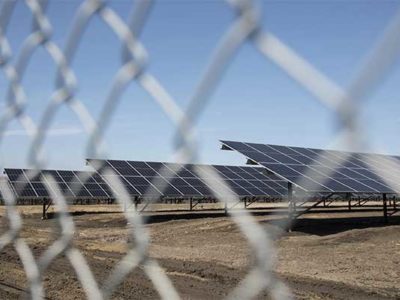CALGARY — Canada’s 100 largest publicly traded companies will need 7.7 gigawatts (GW) of renewable electricity by 2040 to meet their greenhouse gas reduction targets, according to a new report released by the Business Renewables Centre-Canada (BRC-Canada).
The projected demand is equivalent to the power required for approximately 1.88 million Canadian homes.

The Business Renewables Centre-Canada (BRC-Canada), an initiative of the Pembina Institute, enables businesses and institutions to access renewable energy for their emissions reduction needs across Canada.
The report, From Pledge to Power: Translating ESG Goals into Renewable Energy Demand, provides one of the most detailed national analyses to date of how corporate climate commitments translate into actual electricity requirements. It concludes that more than half of this demand—about 3.9 GW—must be secured by 2030, underscoring the urgency for new renewable generation and supportive policy frameworks.
BRC-Canada’s analysis points to what it calls a “time-sensitive opportunity” for provinces to attract investment and employment linked to clean-energy development. The report argues that jurisdictions enabling corporate procurement—through mechanisms such as virtual power-purchase agreements—stand to gain from new tax revenue, long-term capital inflows, and an expanded clean-power supply attractive to large employers.
“Canada’s largest companies are signalling an urgent demand for reliable, low-cost electricity—and today there’s no cheaper or more energy-secure source than renewables,” said Jorden Dye, Director of BRC-Canada. “Growing clean grids isn’t only about climate action; it’s also a way to build competitive economies and attract private investment.”
According to the report, corporate buyers across Canada are already preparing to invest in large-scale renewable projects but face regulatory and policy barriers that limit participation in several provinces. Dye noted that enabling policies are uneven nationwide, leaving many firms unable to directly procure clean power despite stated net-zero ambitions.
Regional and sectoral breakdown
The analysis finds that Ontario represents the largest share of projected demand at 4.2 GW (54 percent), followed by Alberta with 1.4 GW (19 percent) and Quebec with 819 megawatts (11 percent). Collectively, these three provinces account for roughly 85 percent of identified demand from the country’s top corporate emitters.
By sector, retail leads with 37 percent of the total expected demand, followed by mining, quarrying, and oil and gas extraction (26 percent), and utilities (13 percent). The study also found that 20 of the 100 companies analyzed have yet to set formal greenhouse-gas reduction or renewable-energy targets.
The report suggests that if these targets are to be met, corporate demand could more than double Canada’s current installed solar capacity within the next five years—signaling a major opportunity for provinces prepared to support large-scale renewable procurement.










Comments